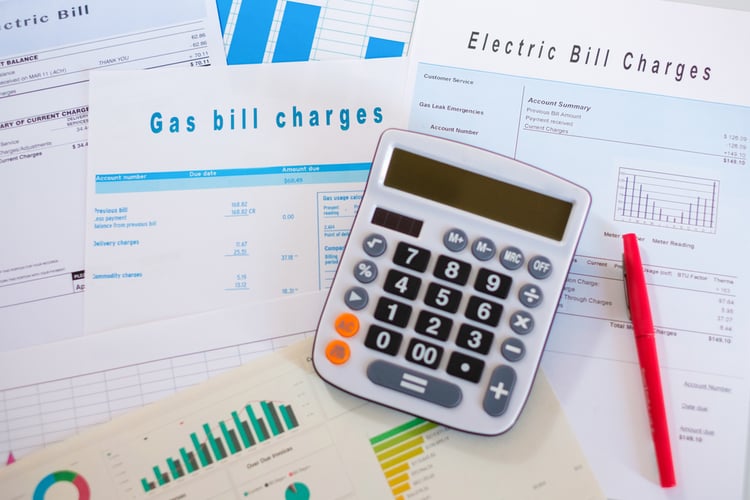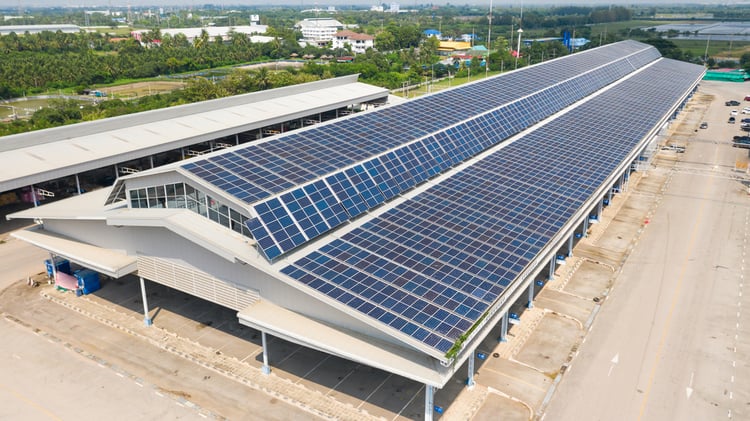The U.S. Bureau of Labor Statistics published its latest Consumer Price Index (CPI) report on June 10, covering May 2022 inflation rates. U.S. inflation reached 8.6% in the 12-month period between May 2021 and May 2022, which represents another 40-year record. The energy sector suffered the biggest price increases, with a 34.6% increase in the CPI.
Worried about your electricity and gas bills? Get a professional energy audit.
Electricity and fossil fuels have increased in price, which has a direct impact on buildings' energy bills and transport costs. However, homeowners and businesses can now rely on a variety of technologies to reduce their dependence on external energy sources, mitigating the impact of high inflation.
- Energy-efficient devices such as LED light bulbs and variable refrigerant flow HVAC systems can directly reduce consumption.
- Renewable generation systems can be implemented on site, reducing electricity consumption from the grid.
- On-site generation can be combined with electric vehicle chargers providing building occupants with a transportation option independent of gas stations.
When there is high inflation in the energy sector, homes and businesses that depend entirely on gas stations and public services suffer the most. However, this also means that energy efficiency and renewable production now offer a better return on investment.
Breaking down energy prices in the latest US inflation report

As you can see on the US BLS website, energy prices overall increased by 34.6% between May 2021 and May 2022. However, not all energy products and services were affected equally.
- Energy commodities increased by 50.3%, and this includes fuel oil (+106.7%) and all types of gasoline (+48.7%).
- Energy services increased by 16.2%, and this includes electricity (+12.0%) and piped natural gas (+30.2%).
Considering only May 2022, there was an increase of 3.9% in the energy price index: 4.5% in the case of commodities and 3.0% in services. Gasoline saw a 4.1% price increase and fuel oil saw a drastic increase of 16.9% in a single month. Electricity prices rose 1.3%, while piped natural gas prices rose 8.0%.
In general, energy products were more affected than energy services, and fossil fuels for direct consumption were more affected than electricity. For a building owner, the increase in energy costs will depend on the sources used. If you compare a building that uses an oil boiler with a building that uses an electric heat pump, you will most likely find that heating costs have increased more in the former property.
In the case of gasoline and diesel, price increases have been driven by international oil markets. According to the latest data from the US Energy Information Administration (April 2022), crude oil represents 60% of the price of a gallon of gasoline and 49% of the price of a gallon of diesel. The remainder of the price is divided between refining, distribution, marketing and taxes.
Avoiding inflation with energy efficiency and renewable generation

When building owners depend entirely on public utilities and occupants use traditional gas cars, they suffer the full impact of periods of high inflation like the current one. However, a building can become more resilient with a combination of energy efficiency measures and on-site generation. Owners can also encourage the use of electric vehicles by installing DC fast chargers, which charge an EV battery to around 60-80% charge in just 15 minutes.
Renewable generation not only offers electricity savings but also predictable costs over time. For example, the annual maintenance cost of a photovoltaic solar array typically represents about 0.50% of initial costs and can last more than 25 years. This contrasts with electricity and gas tariffs, which are impossible to predict over such a long period of time.
Energy retrofits and renewable energy production systems often qualify for low-interest loans and other financial incentives. You can replace unpredictable energy bills with fixed loan payments, which are often much lower than the savings achieved. Depending on the type of energy upgrade and your eligibility for incentives, it may even be possible to complete the project at zero net cost. By obtaining a professional energy audit and design drawing, you can ensure your building qualifies for all available incentives.

